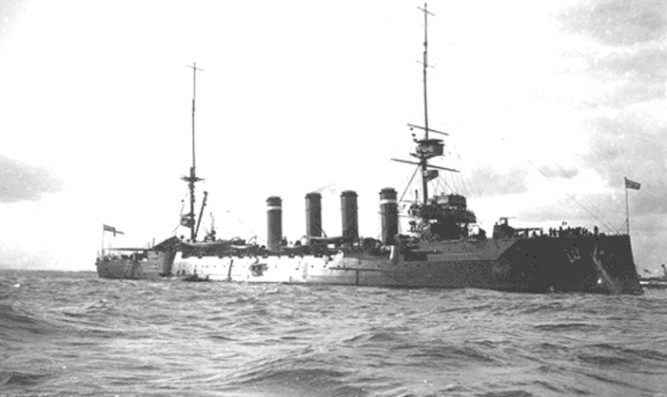The failure to switch on a lighthouse because of bad weather led to one of Tayside’s worst shipping disasters 100 years ago today.
But the fate of HMS Argyll has remained a little-known chapter in maritime history for the past century because of secrecy laws surrounding the First World War disaster.
During the Great War, the Bell Rock lighthouse located on a large reef 11 miles from Arbroath was switched off and only illuminated when merchant or Allied ships passed.
When the 473-foot HMS Argyll, an armoured cruiser, was approaching the area at night on October 28 1915, it contacted the Navy base at Rosyth to request the light be switched on.
But heavy seas meant a torpedo boat launched from Rosyth, and a nearby battleship, could not alert the lighthouse keepers in time. At 4.30am the 10,850-ton Argyll hit the reef with such force that it lodged the keel of the boat firmly on to the rocks and ruptured its oil tanks, which then started a fire.
Remarkably, all 655 men on board the ship were accounted for. The lighthouse keepers floated a line to the ship but the men stayed aboard as there would not be space on the reef and lighthouse for the hundreds of men on board.
Kirsten Couper, the senior assistant at the Signal Tower Museum in Arbroath, has researched the disaster. “As the tide was rising, the captain received word that three local lifeboats had been forced back to port due to heavy seas,” she said.
“However, two destroyers, the HMS Hornet and HMS Jackal, had been diverted from their patrol to assist and rescue the men on the Argyll.
“In extremely dangerous conditions, while the boats clashed violently in the heavy seas, the entire crew was rescued with only a sprained ankle reported.”
The Argyll eventually broke up at sea and salvage efforts stripped her range-finder, gun lights, 12 power guns and five of her six-inch guns.
A court martial was ordered a few weeks after the ship sunk. The outcome is unknown but Captain Tancred and navigating officer Lieutenant Commander Graham Cunningham Glen, both continued their Navy careers.
After the war, the Bell Rock Lighthouse received a radio to help prevent similar tragedies happening again.
A model of the Argyll is on display at the Riverside Museum in Glasgow and the Signal Tower Museum has a large spanner and a stove top from the ship, which were recovered by divers.
